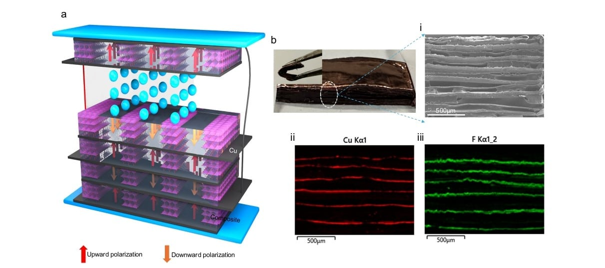Engineers have created a compact microgenerator powered by human effort.
Piezoelectric microgenerators are capable of converting external kinetic energy into electrical energy due to physical changes in the medium, such as vibrations or light finger taps. The piezoelectric effect itself occurs when the deformation of a nanomaterial object generates an electric charge on its surface. Such a generator can serve as an energy source, provided it produces a sufficiently high output voltage and current.
The piezoelectric charge constants of materials like piezo ceramics function effectively. However, their brittle nature and high cost necessitate the search for new solutions.
Researchers are particularly interested in composites based on metal halides and perovskites, which are crystalline compounds consisting of five atoms: two positive ions and three negative ones. They possess photophysical, electrical, and structural properties that are ideal for harnessing mechanical energy, and thus, clean energy. Their advantages include solution processability, flexibility, and low-temperature synthesis. For instance, such materials are used in the creation of nanolasers and light-emitting diodes.
Despite these unique properties, researchers from the University of Waterloo (Canada) noted that this material falls short compared to ceramic counterparts in terms of output current density. In previous composites created by engineers, nanoparticles increased the dielectric permittivity but reduced dielectric strength, or the material's ability to withstand high voltage without electrical breakdown.
These characteristics shaped the design for electrical engineers. They enhanced the first parameter through nanoparticles with high permeability and improved the second by optimizing the perovskite structure. The authors of the study chemically modified the nanoparticles to suppress ion migration caused by electric current and improve the piezoelectric response.

According to the test results, the scientists concluded that the device could demonstrate record efficiency with significantly lower material costs. In a research paper published in the journal Nature Communications, they emphasized that the economic and technological advantages of using organometal halide perovskites compared to ceramic piezoelectrics open up opportunities for new developments.
This technology can be applied not only to portable electronics but also to larger-scale applications, such as powering lighting equipment on airplanes.